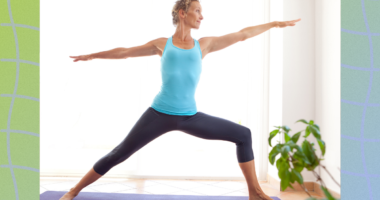
Spring never comes soon enough for me. After months of being cooped up indoors and finishing my workday in darkness, the warmer, longer, brighter days make me feel like a sparkly new person. As a kid, I spent countless hours swimming and floating in the lake by our summer rental cottage until my fingertips looked like raisins. Feeling enveloped and protected by the cool, clear water brought me a peace that no words could. Now, whenever I’m dealing with tough feelings, taking a walk—even a short one—almost always helps, at least a little.
You don’t have to show me the science to convince me that connecting with the outdoors can be a, well, natural mood enhancer. But the evidence is definitely there: A 2019 research review published in the journal Science Advances linked nature exposure—things like access to green spaces and walking in a natural environment—to increased happiness and subjective well-being, a stronger sense of purpose in life, and decreased stress, among many other mental health benefits. That’s not to say that tree climbing, star gazing, or beach strolling is a psychological cure-all—a lot of intersecting circumstances can influence your mental health, including social, physiological, and genetic factors, as the study authors note. But if a natural environment is accessible to you, soaking it up can certainly be an intentional form of self-care.
There’s a difference between physically being in nature and mentally connecting with it, though. Common sense and personal experience tell me that strolling through a park with your head buried in your phone as you chip away at your inbox (Who, me?) isn’t exactly the same thing as taking in the fresh air and your surroundings. One way to make sure you’re getting the most out of your time outdoors? Practice “grounding,” a term used to describe various methods of connecting with your physical surroundings, in order to relieve stress and anxiety.
Since grounding techniques involve paying close attention to physical sensations, the outdoors can be a great place to try them. “Being in nature tends to further stimulate our senses by introducing a variety of textures, shapes, smells, patterns, and sights,” says Samantha Snowden, MA, a certified mindfulness teacher with meditation app Headspace (which recently partnered with the National Parks Foundation on a collection of nature-inspired mindfulness content, in case you’re interested).
Maybe you’re a beach person, a hiking enthusiast, or a creature of the lake like me. Or perhaps you take your lunch breaks on a park bench or feel most at peace in your own garden or backyard oasis. No matter your natural environment, Snowden says this simple 5-4-3-2-1 grounding technique can help you sink further into your element(s):
1. Focus on your breathing.
Taking slow, deep, mindful breaths is one of the best methods for entering a state of calm, no matter where you are, Snowden says. As you settle into a natural breathing rhythm, you can also focus on how the ground feels beneath your feet (perhaps during a rocky trail walk) or your body (say, if you’re lying down on a sandy beach). Having physical contact with the earth has also been shown to relieve stress.
2. Identify five things you can see that capture your attention.
Look around for shapes, colors, movement—anything that draws your eye. For example, you may notice the way the sunlight and shadows change the color of the leaves on a tree, the granular texture of the dirt on your walking trail, a squirrel flicking its tail, or some other captivating feature of your environment you may not have noticed before.
READ RELATED: ‘I Didn’t Fit the Profile of a Victim’: Megan Thee Stallion on Surviving Gun Violence
3. Identify four things you can hear.
Maybe you notice sounds such as other people walking by, birds singing or crickets chirping, or even the wind moving through the leaves of the trees—if you can hear it, it counts, says Snowden.
4. Identify three things you can smell.
Nature is full of different scents—some pleasant, some…not exactly pine fresh. Either way, paying attention to distinct aromas and odors alike can bring you into the present moment. “Get curious and see what you notice,” Snowden advises.
5. Identify two things you can sense through your skin.
This can be the feeling of the grass on your feet, the sun or sweat on your face, the cool breeze, the ocean’s mist, or even the texture of your shirt on your back, Snowden says.
6. Identify one thing you can taste.
It may sound strange—especially if you’re not eating or drinking anything at the time—but noticing any sensations or flavors in your mouth can shift your attention to the here and now too. At a loss? You can also think about a flavor you deeply enjoy, Snowden says, like fresh strawberries or refreshing mint.
That’s it—you did it. Five, four, three, two, one with nature.
Related:
Source: SELF










